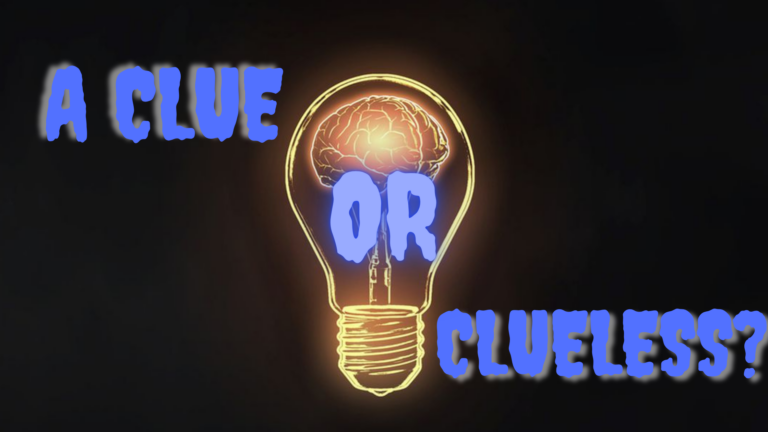On this blog, we’ve covered a lot of topics, from What Is an Escape Room to Who Should I Bring to an Escape Room and a who slew of other escape room-related musings. But I realized just recently that we were missing the most basic part of escape rooms: how do you solve a puzzle? I’ve decided to tackle this deceptively complex topic so first-time players and Escape Room Extraordinaires can play to the best of their ability.
WHAT IS A PUZZLE?
Let’s start at the beginning. According to Merriam-Webster, a puzzle is “something that puzzles” (a very unhelpful definition if you ask me), or “a question, problem, or contrivance designed for testing ingenuity.” In escape rooms, you will come across a wide variety of puzzles, but they will all have something in common: you will be required to use your brain to connect pieces together and discover an outcome.
Step 1: SEARCH
No matter what type of room you are playing, there is one thing you should always do first: Search the room. This should be a very obvious step, but I have seen many groups stumble over this important step and severely impact their game. Any escape room you play will have clues scattered around for you to find. If you don’t take the time to discover your space and collect the provided clues, there is a good chance you will miss vital information that will help you not only solve your puzzle, but be able to understand what you are solving. I recommend collecting anything that looks like it is a clue and placing it somewhere accessible to the group but not in the way. Put things on top of a large open table or desk if there is one available; Do not pile everything in walkways or in front of doors. Know the difference between what looks like a clue and what is just set dressing. Which brings me to a little footnote here:
Know the difference between clues and set dressing. More often than not, clues are made to stand out just enough that they will catch the eye. Look for things that don’t belong, are repeated in different ways throughout the room (such as colored blocks, similar but distinct statuettes, or jars labelled with different types of poison), or look to be purposefully altered in some way. Leave behind things that do not easily move, seem to only serve the purpose of making the space more believable, or don’t have any defining characteristics. And as a pro-tip, avoid making a mess of the room in case you accidentally cover up something you need.

Step 2: ORGANIZE
After you’ve collected you clues, it’s time to move on to organizing your clues. Organize your found items into groups that correlate with each other. Have a collection of severed doll heads each with different hair? Those might go together. Have three marbles, a rubber snake, and a portrait of an old lady playing cards? Those might not go together unless there is something else that stands out about them. Remember to use common sense. If it feels like you’re stretching to make a connection, there’s a good chance that’s not the right path. Ask your group for their opinions.
It’s important to remember that escape rooms are played by a lot of people each day, each with varying degrees of familiarity with puzzles. Many escape rooms are also aware that they will have players that are not native English-speakers and have developed their puzzles to be more accessible to a wide audience. If you find yourself digging for some obscure horror movie reference to open a lock, chances are there’s an easier way to solve the puzzle.
STEP 3: FIND
After you have organized your clues, it’s time to move on to the next step: finding where to input your code. If you are solving a puzzle and it looks like you are getting an answer containing five numbers, look for a place to input a five-digit code. This can also help you in the opposite direction. Have a collection of items but you’re not sure what to do with them? Look at what you’re trying to unlock. If it’s a five-letter lock, you know you will somehow have to convert your puzzle pieces into letters. Seriously, this is probably one of the most helpful hints I can give for any escape room; Know what you are looking for and let that guide your puzzle solving.
STEP 4: INPUT
And now we reach the final part of solving a puzzle: input your code. If you are unlocking a number or letter lock made up of tumblers, it’s important to make sure you are aligning your code perfectly to the correct spot. Look for any indicators of where to align your code. After your code is aligned, give the lock a firm tug. Yanking ferociously multiple times on a lock will not open it if you have the wrong code, despite what many people seem to think. If your lock doesn’t open, check again to make sure your code is perfectly aligned to the correct spot and give it another tug. If you are using a keypad, make sure you hit the submit button after entering your code. Most of the time the submit button is specifically stated or may even be part of the code.
BONUS TIP
What if your lock doesn’t open? Double-check your work. Start from the beginning of your puzzle again and make sure you didn’t make a mistake. Ask a teammate to check your work. Search your room for another lock or place to input your code.
I hope this guide will help you or your friends in your escape room endeavors. Remember, escape rooms can be overwhelming at times, but as long as you stop to think about your basics, you can ensure your group moves in the correct direction.
Geoff Durham
Game Master, Manager, Puzzle-Solver
Cross Roads Escape Games






